American Horror Story: Murder House has several influences, but above all it pulls from, and serves as a secret remake of, 1989 classic Beetlejuice. While Ryan Murphy has never confirmed Tim Burton’s horror-comedy as an inspiration for the first season of his anthology series, there are quite a few noteworthy parallels between the film and show. In some instances, AHS: Murder House can feel like a more mature version of Beetlejuice.
American Horror Story has been going strong for 9 seasons, but many fans and critics still tout the first season as the best. It sets the horror bar extremely high with its portrayal of a haunted house, its ghostly inhabitants, and all the evil which surrounds it, and following seasons have had difficulty reaching its level of acclaim. While more recent seasons have leaned into the truly outlandish and bizarre, AHS: Murder House took a basic, tried and true storyline – a family moves into a house with some dark secrets – and made it its own.
Beetlejuice is much lighter fare than American Horror Story, but it’s still able to blend its dark comedic edge with horror elements. Though it’s a rarely-discussed reference in the long list of AHS: Murder House‘s horror movie Easter eggs and may just be a coincidence, Beetlejuice does has several plot lines and characters that align with the narrative in Murder House. Let’s take a look at the not so subtle and obscure Beetlejuice references that pop up in the anthology’s debut season.
Home as a Ghostly Prison
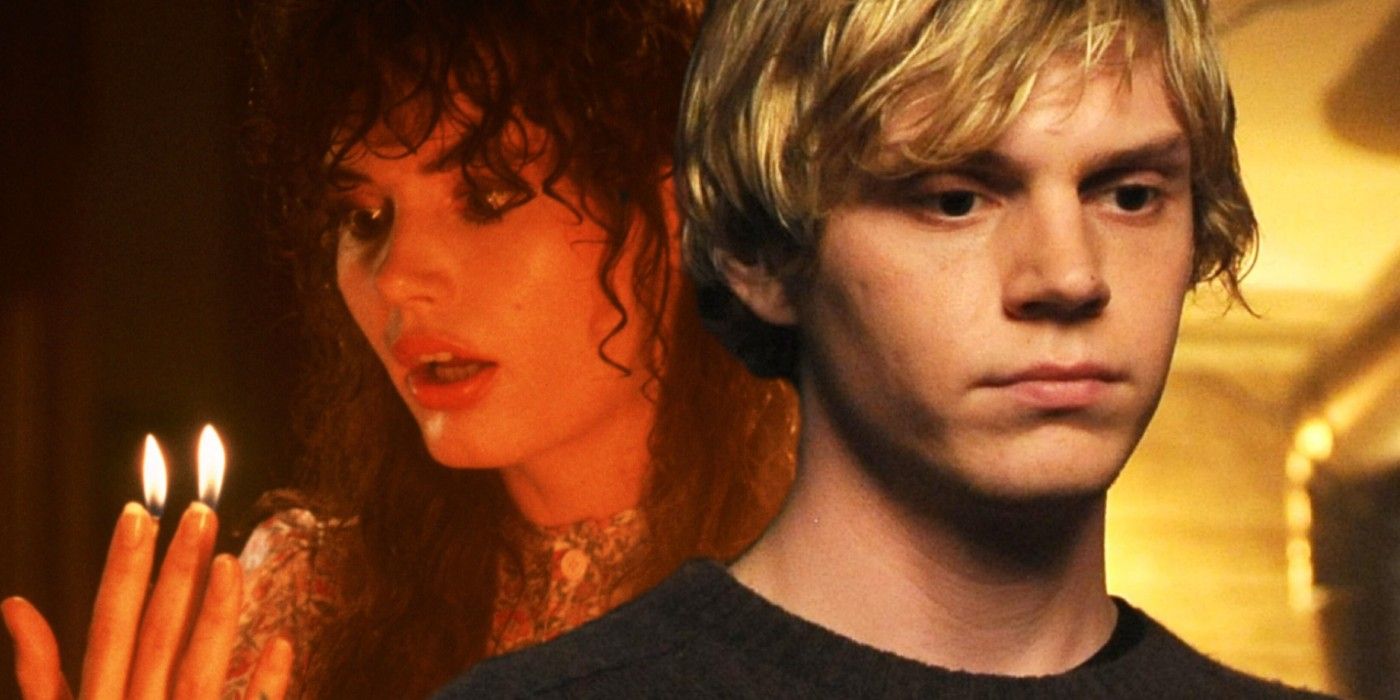
The most obvious parallel between AHS: Murder House and Beetlejuice is that the ghosts are restricted to their homes. Both houses act as prisons for the spirits, and there are set boundaries depending on where the person died. Barbara and Adam Maitland (Geena Davis and Alec Baldwin), die outside of their home after they swerve their car off a bridge to avoid hitting a dog, but they end up back at home and unable to leave. With the help of Handbook for the Recently Deceased, they learn that each individual entity has different boundaries and that they must stay in their house for 125 years before they can presumably move on. To what exactly isn’t made clear… perhaps to a job working in the corporate afterlife? It sounds like a hellish eternity regardless. If they do leave, they get stuck on Saturn with sandworms.
Conversely, spirits who die on the Murder House property can’t leave except on Halloween. Otherwise, they’re also stuck in a hellish eternity, which makes sense seeing as the house is built over a literal portal to hell, as AHS: Apocalypse reveals in “Return to Murder House.” If they try to exit the house, they end up back where they were. Since the ghosts can’t leave the house for 364 days, they’re barred from the passing of time in the outside world. Violet laments to Tate that they’re “prisoners in a windowless cell” and asks who will teach her how the world works years later when computers are rendered useless. In Beetlejuice, Barbara and Adam have Lydia Deetz to bring them pictures of the new town hall and news from the outside world, but how long will that last? Though they are content with each other now, there’s no guarantee that they won’t become lonely as the years go on.
The Lonely, Misunderstood Daughter
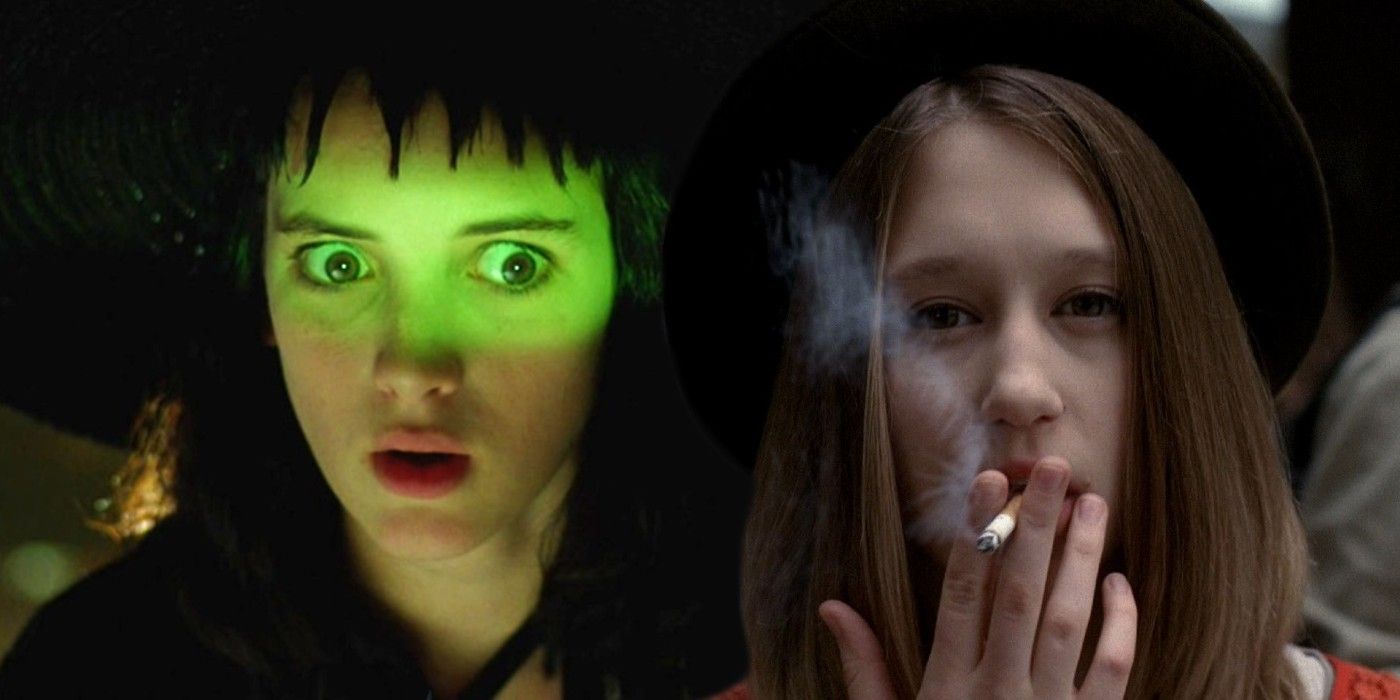
Both AHS: Murder House and Beetlejuice feature a family of three looking to escape and start anew someplace else. They both have teenage daughters who are often misunderstood and yearning for connection. They eventually find comfort in the ghosts of the house. In Beetlejuice, Lydia Deetz (Winona Ryder) is withdrawn and most likely suffers from depression, as she writes a suicide letter and tells Barbara and Adam she’d rather be dead like them. While the ghosts remain invisible to most people, Lydia can see and interact with the Maitlands because she is “strange and unusual.” The Maitlands become the supportive stand-in parents she never had, which brings her further out of her shell and strengthens her resolve to protect them from the living. At the end, she is thriving in school and cohabitates happily with her parents and the Maitlands.
Violet Harmon (Taissa Farmiga) is grunge to Lydia’s goth. She also smokes and self-harms, but her desire for connection is still the same. She finds belonging and acceptance in Tate, whom she does not know is a ghost until later on in the season. Unlike the ghosts in Beetlejuice, the spirits of AHS can choose to show themselves to the living. The big reveal that Tate was a school shooter and is currently dead pushes Violet to the breaking point and she overdoses on sleeping pills and dies. Lydia could have suffered the same fate, as earlier drafts of the Beetlejuice script had her dying and living with the Maitlands in the afterlife. Violet spends decades in the house away from Tate, since he did assault and impregnate her mother with the antichrist, but the witches from AHS: Coven are successful in reuniting them in Apocalypse. Both teens achieve happy endings with their ghost families.
The Hotshot Medium
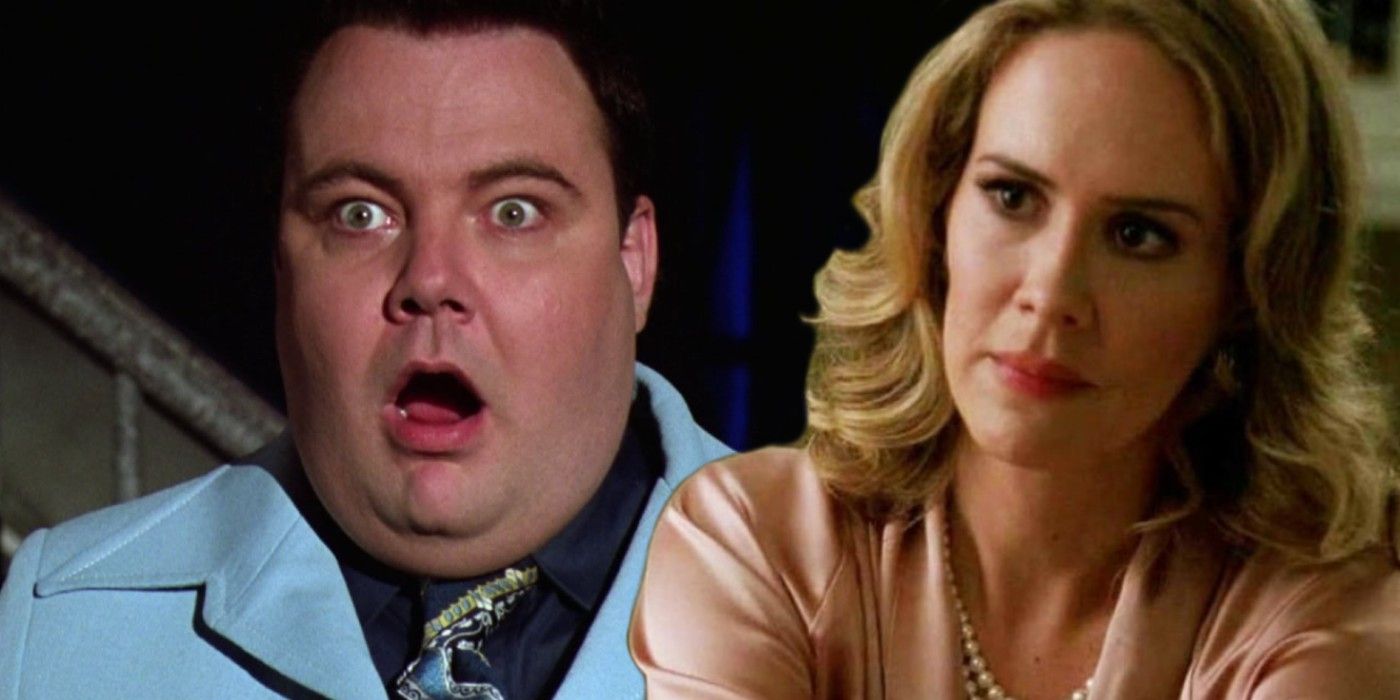
Beetlejuice and Murder House also feature two supporting characters who are mediums. Both sense and can call upon the spirits at will. Otho (Glenn Shaddix), is Delia Deetz’s narcissistic interior decorator and used to be NYC’s top paranormal investigator. He can feel the Maitlands’ presence, especially when Adam brushes past him on his way up to lock the attic door, though he doesn’t actually see them until he conducts a seance and very nearly kills them again.
Billie Dean Howard (Sarah Paulson) is like Otho, in that she’s a top Hollywood psychic who can be self-possessed. She’s hired by Constance to help her reconnect with her daughter Adelaide and assist Tate with passing on. This does not work, however, since Billie feels the evil in him and in Murder House. The negative psychic energy is so strong that it’s allowing darkness to pass between both worlds. Though Otho’s fate is unknown at the end of Beetlejuice, Billie shows up in subsequent seasons of American Horror Story.
Scaring & Possessing The New Family
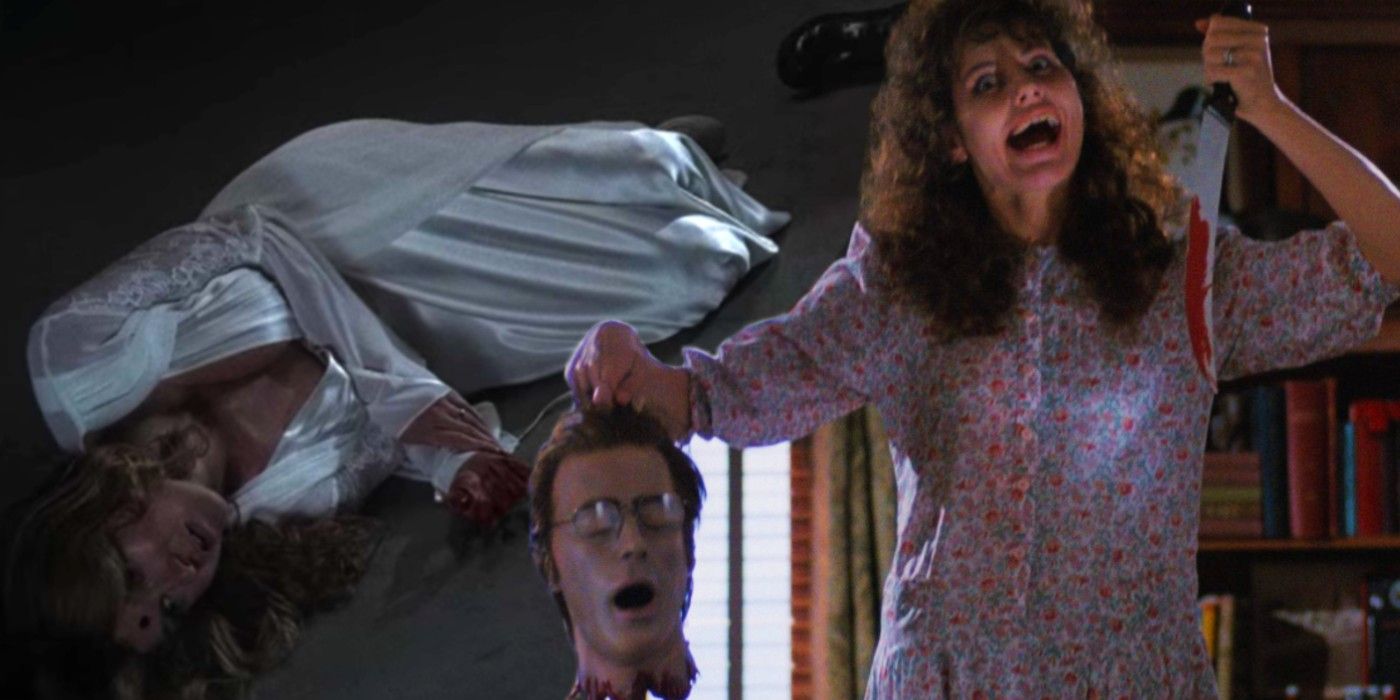
The whole plot of Beetlejuice revolves around the Maitlands re-claiming their house after it’s been sold to the insufferable Deetz family. Most of the film details their failure to frighten them out of the house forever. They lean heavily into the theatrical, staging elaborate set-ups of murders or suicides when the family first moves in. Later, they possess the family and their dinner guests. Of course, these attempts don’t go as planned because the Maitlands can’t be seen and the family thinks they can profit off their haunting.
The Harmons and other ghosts directly parallel the Maitlands at the end of AHS: Murder House when they scare the new homeowners away. Vivien and Ben (Connie Britton and Dylan McDermott) drive the parents to the basement, where Vivien disembowels Ben and Ben shoots Vivien. In an effort to protect the new family, they caution that the homeowners will meet the same fate if they stay.
Trials of Motherhood
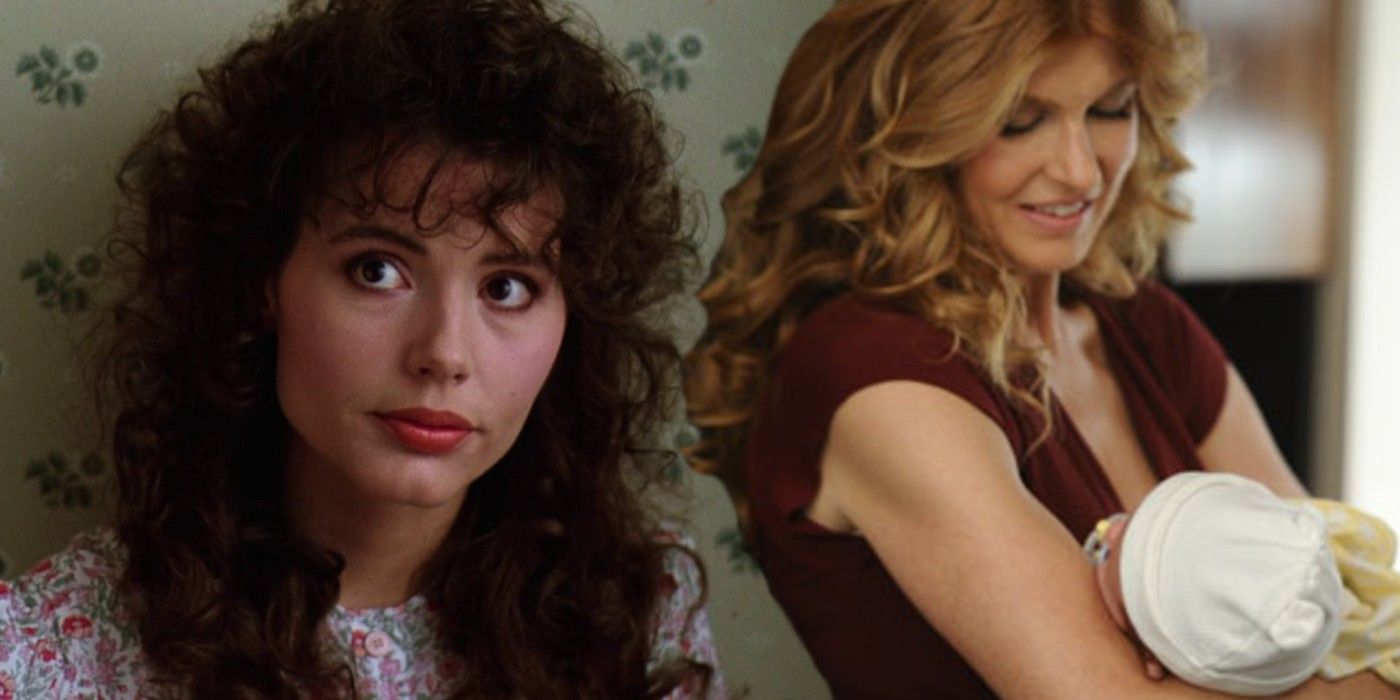
The desire to mother runs strong throughout Beetlejuice and Murder House. In the beginning, Barbara and Adam are pestered by Barbara’s cousin Jane, the town realtor, to sell their house to a family. It’s a consistent reminder that Barbara and Adam have struggled to conceive, and it’s only after their death that Barbara becomes a maternal figure to Lydia.
In Murder House, Vivien grapples with the miscarriage of her son and her husband’s affair. Though her new house and the evil within takes advantage of her in the worst imaginable way, Vivien is able to live a peaceful afterlife with Ben, Violet, and Jeffrey, one of the twins who died in childbirth. Through unbelievable tragedy, both women find a little bit of happiness after death.
Even though American Horror Story: Murder House and Beetlejuice have varying narratives, there are numerous similar threads that connect them. In horror’s vast history, it is not uncommon to see the same references in different films. While all of these connections are theoretical, they both show families learning to grow together in a haunted house and ghosts learning how to cohabitate with the living.




